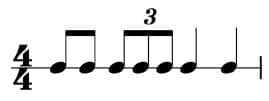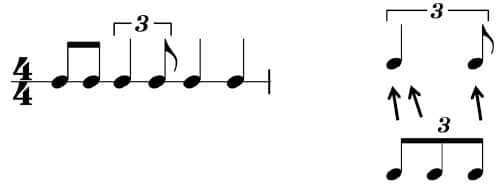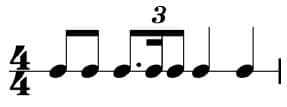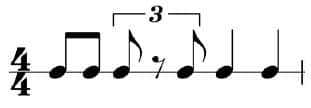Expert Tip: Tuplets in Practice
We said that the triplet is the division of a note into three equal parts instead of two. But we can use those three equal parts in different ways. Here we’ll discuss some examples.
Let’s begin with a simple rhythm that contains a triplet of eighth notes:
Now here is that same rhythm with the triplet changed into a quarter and an eighth note. The triplet here is worth exactly the same amount as before (one quarter note) because it’s still the subdivision into three equal parts
. The difference is that the quarter note takes two of those parts and the eighth note takes the third part:
Here’s another example. This time the triplet contains a dotted rhythm:
And finally, the triplet here contains a rest:
In all these examples the notes still add up to a triplet of eighth notes (which in turn add up to one quarter beat). The point of this short lesson is that the actual rhythm of a triplet doesn’t always show three equal parts.
In conclusion, the triplet creates the space for the subdivision into three parts, but those parts can be handled in various ways.





